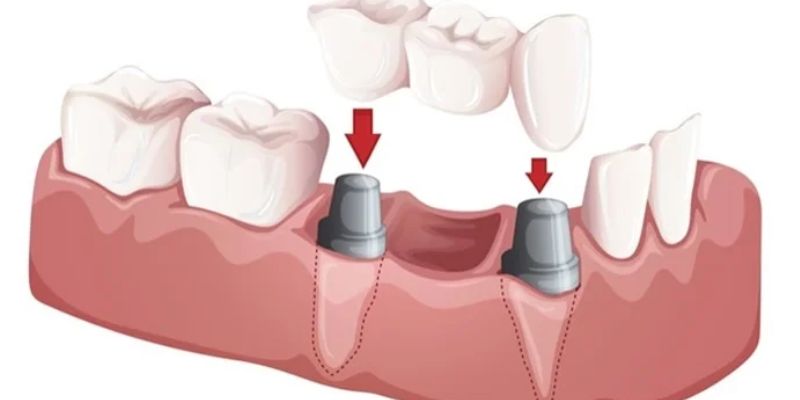What Is Applied Behavioral Analysis (ABA) Therapy for Autism
Dec 29, 2023 By Madison Evans
Are you a parent of a child with autism? Are you seeking an effective treatment that teaches them skills and behaviors to reach their goals? Applied Behavioral Analysis (ABA) therapy is a leading evidence-based intervention developed specifically for individuals with autism spectrum disorders.
ABA has been widely recognized as one of the most successful types of therapy available today, helping children learn communication and educational skills, build relationships, decrease problem behaviors, and become more independent—all while improving overall quality of life.
Read on to learn more about this groundbreaking form of therapy and how it can help your family thrive!
Overview of Applied Behavioral Analysis (ABA) Therapy

Applied Behavioral Analysis (ABA) therapy is an evidence-based and highly effective intervention that focuses on teaching skills and behaviors to increase communication, and educational abilities, build relationships, decrease problem behaviors, and help individuals with autism spectrum disorders become more independent.
ABA has been widely recognized as a successful treatment for children with autism.
Positive reinforcement is the foundation of ABA treatment at its heart. This indicates that a person or kid receives something they like as a reward for engaging in a desired behavior or skill.
This reward system helps to reinforce the desired behavior and encourages the individual to continue using those skills in everyday life.
How does ABA therapy work?

ABA therapy is tailored to the individual's needs and goals. It focuses on teaching skills and strategies that can be used in various settings, including home, school, and community.
An ABA therapist will work with the individual to determine which behaviors need to be changed or improved and create an individualized treatment plan.
The therapist will then use evidenced-based techniques, such as positive reinforcement and prompting, to help the individual learn new skills or behaviors.
ABA therapy is a comprehensive approach to teaching skills and behaviors that can be implemented in any setting. It can include structured play activities, social stories, visual supports, communication strategies, problem-solving activities, and more.
Most importantly, ABA therapists strive to create a positive learning environment for their clients and use evidence-based strategies to promote successful outcomes.
What is Applied Behaviour Analysis (ABA) for?
ABA therapy is most effective for children and adolescents diagnosed with Autism Spectrum Disorder (ASD). It can also treat other developmental disorders, such as Attention Deficit Hyperactivity Disorder (ADHD) and Obsessive Compulsive Disorder (OCD).
ABA has proven to be an incredibly successful treatment option for people of all ages with these disorders.
With ABA, clinicians use various techniques and strategies to help individuals acquire the skills needed for their development.
ABA is an individualized approach that considers each person's needs, preferences, and goals to create an effective treatment plan.
This therapy also focuses on helping parents learn how to support their child's development.
ABA Theory and Techniques
ABA therapy is based on the principles of behavior analysis, which focuses on understanding how behavior works and why it occurs.
This theory explains that all behaviors have a cause-and-effect relationship, meaning every action has an outcome or consequence.
ABA therapists use this knowledge to help identify and modify behaviors to achieve desired results.
Regarding techniques, ABA therapists use various methods to teach skills and behaviors. These include but are not limited to prompting, reinforcement, shaping, chaining, and generalization.
These techniques help individuals learn communication and educational skills, build relationships with others, decrease problem behaviors, and increase independence—all while improving overall quality of life.
Benefits of Applied Behaviour Analysis (ABA) Therapy
Communication and Social Skills
ABA therapy can help children with ASD improve their communication and social interaction skills. Through ABA techniques, clinicians can teach the child how to express themselves verbally, non-verbally (e.g., using sign language or picture symbols), and in writing.
Additionally, clinicians can also work on helping the child to recognize social cues and develop empathy.
Behavioral Regulation
ABA can help individuals with autism control their behavior, especially when feeling overwhelmed or frustrated. Clinicians use positive reinforcement techniques to encourage desired behaviors, such as following instructions, staying on task, and controlling outbursts.
Additionally, clinicians can teach individuals how to self-monitor and regulate their behaviors.
Independence
ABA therapy focuses on teaching children with ASD new skills to help them become more independent in different areas of life.
This might include learning to dress, completing chores around the house, or following a daily routine without constant reminders from parents or caregivers.
ABA provides an individualized approach that works on progressively teaching these skills.
Self-Advocacy
ABA therapy can also help individuals with ASD learn how to advocate for themselves when faced with difficult situations or challenging tasks.
Clinicians use techniques such as role-playing and modeling to help the individual understand how to ask for help, express their feelings, and negotiate solutions.
These strategies can be invaluable tools for children as they grow into adulthood.
Quality of Life
Most importantly, ABA therapy helps to improve the overall quality of life for individuals with autism spectrum disorder and their families.
This is because ABA provides a comprehensive approach that focuses on helping people acquire essential skills while reducing problem behaviors and increasing independence. The results of ABA therapy can be life-changing for those who receive it.
Overall, Applied Behavioral Analysis (ABA) therapy is an evidence-based and highly effective intervention focusing on teaching skills and behaviors to increase communication, and educational abilities, build relationships, decrease problem behaviors, and help individuals with autism spectrum disorder become more independent!
Steps to Implement ABA Successfully
Step 1: Assessment
The first step in implementing ABA therapy is assessment. This involves collecting information about the individual's current skills and abilities and any problem behaviors or areas of difficulty.
The assessment should also include gathering information from parents and other professionals involved in the person's care.
Step 2: Develop a Treatment Plan
Once the assessment is complete, developing an individualized treatment plan is next. This plan should be tailored to each individual's needs and goals, with measurable, attainable, and specific objectives.
Step 3: Implementing & Monitoring Treatment
After the treatment plan has been developed, it can be implemented by ABA therapists in any setting. It is important to monitor progress regularly and adjust the plan as needed. Clinical notes can also be kept to track any changes or improvements.
Step 4: Evaluating Progress
It is critical to evaluate progress at regular intervals throughout therapy. Evaluation includes both quantitative (measuring behaviors) and qualitative (descriptive feedback from parents, teachers, and other professionals) methods.
This can help ensure the therapy is effective and identify areas needing further work or adjustment.
FAQs
What is ABA therapy?
Applied Behavioral Analysis (ABA) therapy is a form of evidence-based intervention developed specifically for individuals with autism spectrum disorders. It uses principles of behavior to help children learn communication and educational skills, build relationships, decrease problem behaviors, and become more independent—all while improving overall quality of life.
What type of situations can ABA address?
ABA has been used to address various issues, including communication, social skills, independent living skills, school readiness, problem-solving, self-care skills, and self-regulation. Additionally, it can help individuals with autism develop healthy coping strategies for anxiety or other challenging behaviors.
Is ABA therapy right for my child?
ABA therapy is an effective treatment option widely recognized as one of the most successful types of therapy available today. However, discussing your needs with a qualified behavioral specialist is important to determine if ABA is the best option.
Conclusion
ABA is a powerful tool for helping individuals with autism develop the skills to live more independent and fulfilling lives. With its focus on behavior modification and skill development, ABA has been proven effective in reducing problem behaviors, increasing communication abilities, improving educational performance, building social relationships, and more!
On this page
Overview of Applied Behavioral Analysis (ABA) Therapy How does ABA therapy work? What is Applied Behaviour Analysis (ABA) for? ABA Theory and Techniques Benefits of Applied Behaviour Analysis (ABA) Therapy Communication and Social Skills Behavioral Regulation Independence Self-Advocacy Quality of Life Steps to Implement ABA Successfully Step 1: Assessment Step 2: Develop a Treatment Plan Step 3: Implementing & Monitoring Treatment Step 4: Evaluating Progress FAQs What is ABA therapy? What type of situations can ABA address? Is ABA therapy right for my child? Conclusion
Choosing Fish Wisely When On A Diet: What Helps or Hinders Weight Loss

What Is a Dental Bridge

Navigating the Ideal Nutrition: Best Diet Choices for Gout Sufferers

Forehead Pimples? 5 Reasons Why They Keep Appearing

A Comprehensive Guide to Dealing With a Pinched Nerve

Pilates on the Mat: Strengthen Your Core with 5 Fantastic Ab Workouts

A Comparative Guide: Choosing Between Olive Oil and Coconut Oil in the Kitchen

Cultivating Better Sleep: 10 Healthy Habits

Buffalo Meat: Evaluating Its Health Contributions

Freedom from Shadows: A Complete Guide to Lightening Dark Armpits

HIIT Unveiled: The Truth Behind 7 Common Misconceptions
